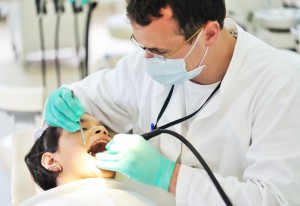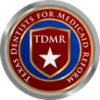The following is a writeup done by a dentist on the Medicaid orthodontic program. He previously wrote on his experience with the program.
 This is a discussion of the Medicaid Insurance Program that covered general dentistry and the specialty of orthodontics.
This is a discussion of the Medicaid Insurance Program that covered general dentistry and the specialty of orthodontics.
To begin the initial approval process, a mother or father would meet with an examiner who was given delegated authority by HHSC to determine if a child would qualify for Medicaid. This individual would generally be called a Case Worker. If the parent met all the requirements, their child or children would be issued an approval form which stated that an insurance account was set up. The patient would then be allowed to go to an authorized Medicaid general dentist and, upon presenting the form, receive care in various ways.
The dentist generally did not have to submit a request for most of the care the dentist felt the child needed. He or she could just perform the work and send a request for payment. Some children might need a lot of fillings, only one or none after the oral exam was completed, which usually included radiographs. Generally the dentist would perform the work and submit a payment request to an insurance management company delegated by HHSC in Texas.
If the dentist felt like the child needed orthodontic care, he would suggest that the parent go to an authorized Medicaid orthodontist for further evaluation. When the child was presented to an orthodontist, the orthodontist would fill out a HLD Score Sheet to see if at least 26 points of malocclusion could be found. However, if 26 points could be found, this was not all that had to be done for the child to be approved for treatment. If the HLD score sheet was all that was needed, the orthodontist would have been able to put it into a patients chart and start performing treatment.
But that was not the case. To actually determine if an HHSC approved management company would authorize orthodontic treatment, records which included study models, photographs, panoramic and cephlametric x-rays, diagnostic and treatment plans would have to be sent in to be reviewed by a qualified orthodontist or the dental director. The subjective HLD scoring number would then be increased or decreased. Only if the score was still 26 or more could approval be given and an account be set up for the child. If the examiner lowered the score below 26 points, a letter would be sent denying treatment for the child.*(TDMR note) The parent of the child could appeal the decision, if they wished.
Upon approval, a specific orthodontic account would be set up for the child. This only authorized the child to use specific amounts of money from the account for treatment. An approval letter would be sent to the parent. The orthodontist would usually receive a copy of the child’s approval about a week later. The orthodontist could not begin treatment until he received his copy. The approval letter was only in the name of a specific child and could be used with any approved orthodontist through proper paper work.
The money in the account never belonged to the doctor. The money was given to a specific child and the child could not authorize payment out of his or her funds to the doctor until they actually went to the office and received care. If the child failed the appointment, the doctor would not be paid for the lost time.

